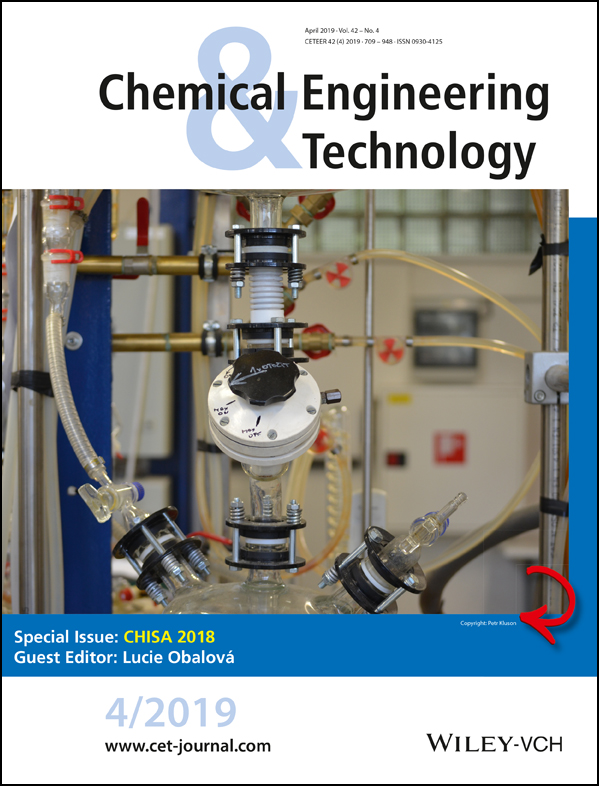Simulation of Post-Combustion CO2 Capture, a Comparison among Absorption, Adsorption and Membranes
Hélène Anselmi
Université de Lorraine, Institut Jean Lamour and Labex DAMAS, CNRS, 2 allée A. Guinier, 54011 Nancy, France
Search for more papers by this authorOlivier Mirgaux
Université de Lorraine, Institut Jean Lamour and Labex DAMAS, CNRS, 2 allée A. Guinier, 54011 Nancy, France
Search for more papers by this authorRoda Bounaceur
Université de Lorraine, Laboratoire Réactions et Génie des Procédés, CNRS, Nancy, France
Search for more papers by this authorCorresponding Author
Fabrice Patisson
Université de Lorraine, Institut Jean Lamour and Labex DAMAS, CNRS, 2 allée A. Guinier, 54011 Nancy, France
Correspondence: Fabrice Patisson ([email protected]), Université de Lorraine, Institut Jean Lamour and Labex DAMAS, CNRS, 2 allée A. Guinier, Nancy 54011, France.Search for more papers by this authorHélène Anselmi
Université de Lorraine, Institut Jean Lamour and Labex DAMAS, CNRS, 2 allée A. Guinier, 54011 Nancy, France
Search for more papers by this authorOlivier Mirgaux
Université de Lorraine, Institut Jean Lamour and Labex DAMAS, CNRS, 2 allée A. Guinier, 54011 Nancy, France
Search for more papers by this authorRoda Bounaceur
Université de Lorraine, Laboratoire Réactions et Génie des Procédés, CNRS, Nancy, France
Search for more papers by this authorCorresponding Author
Fabrice Patisson
Université de Lorraine, Institut Jean Lamour and Labex DAMAS, CNRS, 2 allée A. Guinier, 54011 Nancy, France
Correspondence: Fabrice Patisson ([email protected]), Université de Lorraine, Institut Jean Lamour and Labex DAMAS, CNRS, 2 allée A. Guinier, Nancy 54011, France.Search for more papers by this authorAbstract
Post-combustion CO2 capture was studied in the favorable context where the captured CO2 can be reused in a neighboring industrial process. Three technologies for CO2 capture, absorption by amines, adsorption on activated carbon, and separation using polymer membranes, were considered, modeled and compared. The three capture processes were designed for achieving the same performances. The models were integrated in a commercial flowsheeting software. The results show that, for a targeted CO2 purity of 95 %, the membrane process appears to be the least energy consuming. A next step will be to quantify the environmental benefits using life cycle assessment.
Supporting Information
| Filename | Description |
|---|---|
| ceat201800667-sup-0001-misc_information.pdf285.6 KB | Supplementary Information |
Please note: The publisher is not responsible for the content or functionality of any supporting information supplied by the authors. Any queries (other than missing content) should be directed to the corresponding author for the article.
References
- 1 A. Lopez, D. Roizard, E. Favre, A. Dufour, Les procédés de traitement de capture du CO2 – Cas des unités de traitement et de valorisation thermique des déchets – Etat de l'art, RECORD report 11-0236, 2013, 118. www.record-net.org/
- 2 F. Lecomte, P. Broutin, E. Lebas, CO2 Capture: Technologies to Reduce Greenhouse Gas Emissions, Technip, Paris 2010.
- 3 T. Kamijo et al., Energy Procedia 2013, 37, 813–816. DOI: https://doi.org/10.1016/j.egypro.2013.05.172
- 4 P. Moser et al., Energy Procedia 2014, 63, 902–910. DOI: https://doi.org/10.1016/j.egypro.2014.11.100
- 5 P. Moser et al., Energy Procedia 2013, 37, 2377–2388. DOI: https://doi.org/10.1016/j.egypro.2013.06.119
- 6 Y. Coulier, A. R. Lowe, J.-Y. Coxam, K. Ballerat-Busserolles, ACS Sustainable Chem. Eng. 2018, 6 (1), 918–926. DOI: https://doi.org/10.1021/acssuschemeng.7b03280
- 7 Y. Coulier, A. R. Lowe, A. Moreau, K. Ballerat-Busserolles, J.-Y. Coxam, Fluid Phase Equilib. 2017, 431, 1–7. DOI: https://doi.org/10.1016/j.fluid.2016.10.010
- 8
A. Gomez et al., Oil Gas Sci. Technol.
2014, 69 (6), 1121–1129. DOI: https://doi.org/10.2516/ogst/2014035
10.2516/ogst/2014035 Google Scholar
- 9 L. Raynal, P.-A. Bouillon, A. Gomez, P. Broutin, Chem. Eng. J. 2011, 171 (3), 742–752. DOI: https://doi.org/10.1016/j.cej.2011.01.008
- 10 T. Hirata et al., Energy Procedia 2014, 63, 6120–6128. DOI: https://doi.org/10.1016/j.egypro.2014.11.644
- 11 K. Kadono et al., Energy Procedia 2013, 37, 1785–1792. DOI: https://doi.org/10.1016/j.egypro.2013.06.055
- 12 M. Campbell, Energy Procedia 2014, 63, 801–807. DOI: https://doi.org/10.1016/j.egypro.2014.11.090
- 13 M. Pfister, Captage du CO2 en post combustion par procédé de perméation gazeuse, Ph.D. Thesis, Université de Lorraine, Nancy 2017.
- 14 L. Giordano, D. Roizard, E. Favre, Int. J. Greenhouse Gas Control 2018, 68, 146–163. DOI: https://doi.org/10.1016/j.ijggc.2017.11.008
- 15 T. L. P. Dantas et al., Chem. Eng. J. 2011, 169 (1–3), 11–19. DOI: https://doi.org/10.1016/j.cej.2010.08.026
- 16 A. Ntiamoah, J. Ling, P. Xiao, P. A. Webley, Y. Zhai, Ind. Eng. Chem. Res. 2016, 55 (3), 703–713. DOI: https://doi.org/10.1021/acs.iecr.5b01384
- 17 N. Tlili, G. Grévillot, C. Vallières, Int. J. Greenhouse Gas Control 2009, 3 (5), 519–527. DOI: https://doi.org/10.1016/j.ijggc.2009.04.005
- 18 D. Singh, E. Croiset, P. L. Douglas, M. A. Douglas, Energy Convers. Manage. 2003, 44 (19), 3073–3091.
- 19 U. Desideri, A. Paolucci, Energy Convers. Manage. 1999, 40 (18), 1899–1915.
- 20 L. Zhao, M. Weber, D. Stolten, Energy Procedia 2013, 37, 1125–1134. DOI: https://doi.org/10.1016/j.egypro.2013.05.210
- 21 C. Alie, L. Backham, E. Croiset, P. L. Douglas, Energy Convers. Manage. 2005, 46 (3), 475–487.
- 22 L. Zhao, R. Menzer, E. Riensche, L. Blum, D. Stolten, Energy Procedia 2009, 1 (1), 269–278. DOI: https://doi.org/10.1016/j.egypro.2009.01.038
- 23 T. C. Merkel et al., J. Membr. Sci. 2010, 359 (1–2), 126–139.
- 24 F. Rezaei, S. Subramanian, J. Kalyanaraman, R. P. Lively, Y. Kawajiri, M. J. Realff, Chem. Eng. Sci. 2014, 113, 62–76.
- 25 M. M. F. Hasan, R. C. Baliban, J. A. Elia, C. A. Floudas, Ind. Eng. Chem. Res. 2012, 51 (48), 15665–15682.
- 26 D. T. Kearns, P. A. Webley, Chem. Eng. Sci. 2006, 61 (22), 7223–7233.
- 27 R. Bounaceur, E. Berger, M. Pfister, A. A. Ramirez Santos, E. Favre, J. Membr. Sci. 2017, 523, 77–91. DOI: https://doi.org/10.1016/j.memsci.2016.09.011
- 28
S. Moioli, L. A. Pellegrini, S. Gamba, Procedia Eng.
2012, 42, 1651–1661. DOI: https://doi.org/10.1016/j.proeng.2012.07.558
10.1016/j.proeng.2012.07.558 Google Scholar
- 29 M. Ishibashi et al., Energy Convers. Manage. 1996, 37 (6–8), 929–933.
- 30 R. Jain, US Patent , 2010. 0251887 A1




